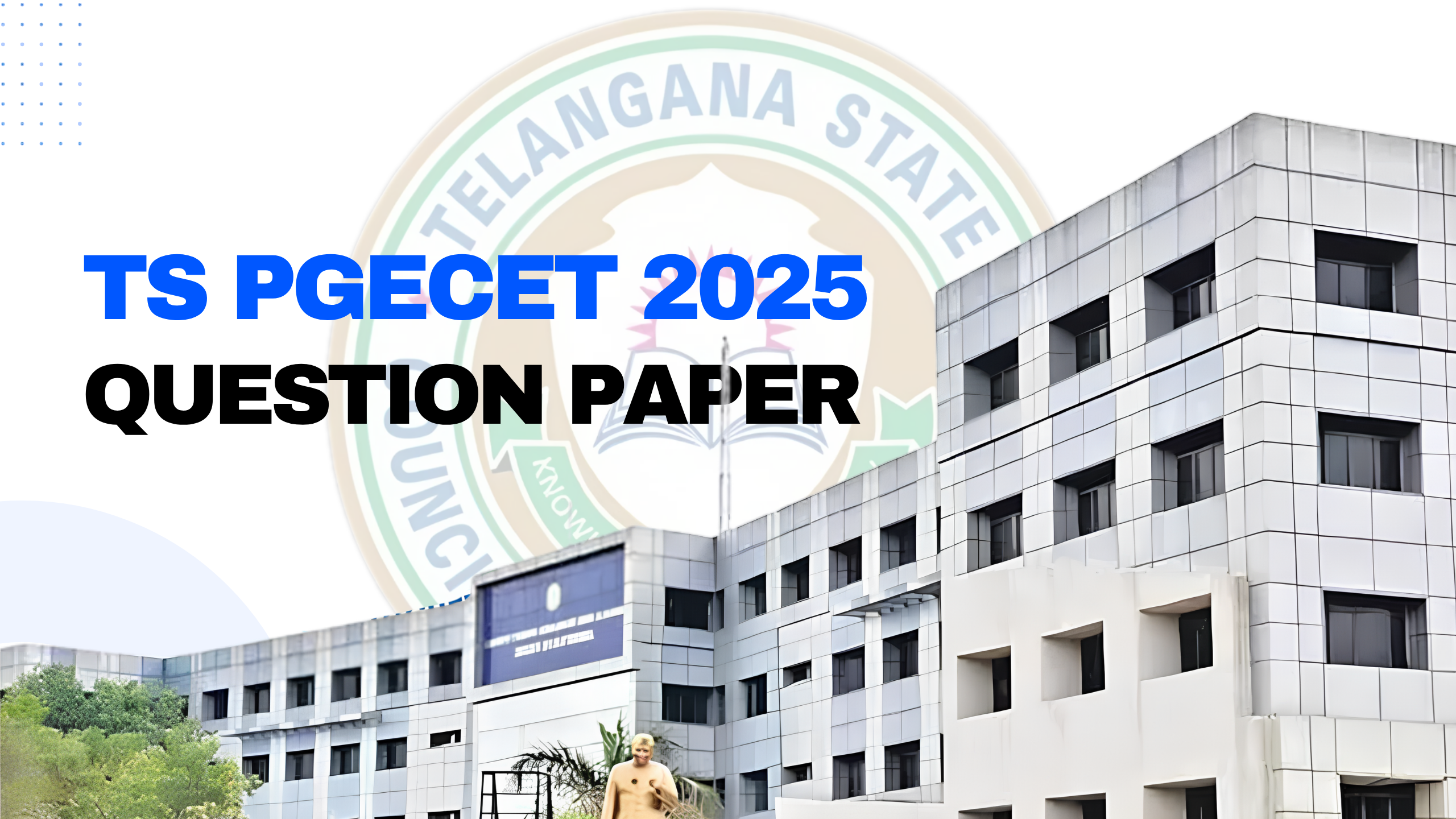The TS PGECET 2025 Exam Shift was conducted on June 19th, 2025 from 09:00 A.M. to 12:00 P.M. in a CBT Mode at various exam centres.
The TS PGECET 2025 Question Paper with Answer Key and Solution PDF is available here. It consists of 120 questions, each carrying one mark, with a total duration of 120 minutes. The exam was divided into different sections based on the respective branches of Engineering and Technology.
TS PGECET 2025 Question Paper with Answer Key
| TS PGECET 2025 Question Paper with Answer Key June 19 Shift 1 | Download PDF | Check Solutions |

Which of the following is not a principle of sustainable development?
The Environmental Impact Assessment (EIA) is used to:
Which of the following techniques is most commonly used for imaging at the nanoscale?
The quantum confinement effect in nanoparticles is observed when:
Which one of the following gases is not a greenhouse gas?
The ISO 14001 standard deals with:
Bioremediation is a process used to:
The top-down approach in nanofabrication refers to:
Which of the following materials exhibits superparamagnetism at the nanoscale?
The surface area-to-volume ratio of nanoparticles:
The term ``carrying capacity" refers to:
Which of the following is an example of non-point source pollution?
In which year was the Earth Summit (Rio Conference) held?
Which of the following techniques is primarily used for the synthesis of carbon nanotubes?




TS PGECET 2025 Important Topics
TS PGECET 2025 is conducted for admission into various postgraduate programs like M.Tech, M.Pharm, and other engineering disciplines in Andhra Pradesh.
The TS PGECET consists of 120 Multiple Choice Questions (MCQs) to be solved in 120 minutes.
| Topic | Weightage (%) |
| Engineering Mathematics | 25% |
| Subject-Specific Topics (Branch-related) | 75% |
| Linear Algebra and Calculus | 5% |
| Differential Equations | 5% |
| Probability and Statistics | 5% |
| Control Systems | 10% |
| Engineering Mechanics | 10% |
| Materials Science | 5% |
| Thermodynamics and Heat Transfer | 10% |
| Electrical Circuits and Machines | 15% |
| Analog and Digital Electronics | 10% |
| Computer Networks | 10% |
| Strength of Materials | 10% |
| Fluid Mechanics | 10% |







Comments